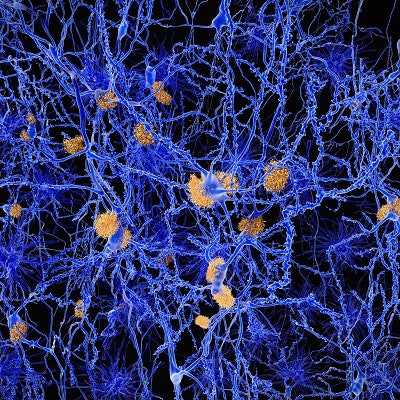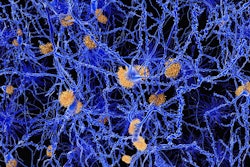
Dutch researchers have developed a quantitative method of analyzing PET images acquired with the radiopharmaceutical flutemetamol that may top semiquantitative methods for identifying dementia-causing amyloid plaque, according to a study published online October 12 in the Journal of Nuclear Medicine.
Called nondisplaceable binding potential (BPND), the fully quantitative method can be used to analyze images from PET scans acquired with flutemetamol (Vizamyl, GE Healthcare) by calculating the ratio of specific to nondisplaceable binding. Flutemetamol binds to amyloid plaques and can indicate how dense these plaques are in the brain.
In contrast, the use of standardized uptake value ratio (SUVr), a semiquantitative method that is often the norm for evaluating amyloid burden, can be affected by changes in regional flow and washout effects.
"As such, quantitative BPND images may be more reliable also for visual interpretation," wrote lead author Lyduine Collij, from VU University Medical Center in Amsterdam, and colleagues.
Previous studies have indicated that SUVr can overestimate the amount of amyloid plaque, compared with the use of BPND. In addition, one study found that parametric BPND PET images with carbon-11-labeled Pittsburgh Compound B (PiB) resulted in higher interreader agreement of plaque assessment than both SUV and SUVr PET images.
The researchers therefore decided to determine whether BPND or SUVr was better for assessing early amyloid pathology on flutemetamol PET scans. The primary outcome was interreader agreement between radiologists interpreting both sets of images -- the technique with the higher level of agreement was considered to be the optimal one.
To that end, Collij and colleagues evaluated 190 cognitively normal seniors (mean age, 70.4 ± 7.56 years); the subjects first had a 30-minute PET scan (Ingenuity TF PET/MRI, Philips Healthcare) performed immediately after injection of flutemetamol (191 ± 20 MBq). After 60 minutes, they underwent a second, 20-minute scan. Three readers who were blinded to clinical information first interpreted all SUVr images, followed by the BPND images in a randomized order. The researchers also calculated the difference between SUVr and BPND values to determine if SUVr tended to overestimate amyloid burden.
Interreader agreement for visual assessment of amyloid plaque was better with the quantitative BPND images than with the semiquantitative SUVr images, the researchers found. They calculated agreement based on kappa (κ), with a score of 1.0 indicating complete agreement.
| Interreader agreement of BPND vs. SUVr on flutemetamol PET scans | ||
| SUVr | BPND | |
| Kappa (κ) | 0.57 | 0.77 |
| Rate of disagreement between readers | 18% | 8% |
In all but one case, global SUVr values overestimated amyloid plaque burden, compared with corresponding global BPND values. The largest mean SUVr overestimation was evident in the frontal lobe region, followed by the parietal and temporal lobes. All three brain regions are associated with amyloid plaque accumulation and potential progression to dementia or Alzheimer's.
Collij and colleagues noted that the study used standard manufacturer guidelines for reading both SUVr and BPND images, adding that it "might still be of interest to formally assess whether the current guidelines are optimal for assessing BPND images."
"In addition, optimizing visual assessment of SUVr images by updating the current guidelines and providing training specifically focused on early accumulation may also result in improved classification certainty," they wrote.



















